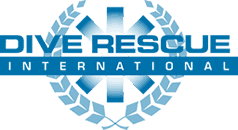Baltimore City Fire Department and Dive Rescue International have teamed up to present a complete diver training package consisting of Dry Suit Diver, Full Face Mask Diver, and Dive Rescue 1 in series – September 24-29, 2023 in Baltimore, Maryland! Classes may not be taken individually.
Dry Suit Diving Diving:
Dry suit Diving is Dive Rescue International’s renowned training program for certified divers and surface support personnel. One of the first steps to preparing for contaminated water or ice diving is learning how to dive in a dry suit. This program is conducted in a classroom, pool, and an open-water site to allow students to practice their new skills in a controlled environment before the field scenarios.
The objectives of the Dry suit Diving program are to develop the student’s knowledge of dry suits and their maintenance; to develop the student’s ability to perform effectively in a dry suit; and to enable the student to plan, organize and conduct safe operational dives. Successful completion of this program is measured in class participation, passing a final written exam and completing in-water skills.
Key training topics and the associated objectives include:
- REASONS FOR DIVING IN A DRY SUIT
- HISTORY OF DRY SUITS
- CARE AND MAINTENANCE OF DRY SUITS
- PROPER USE OF DRY SUITS
Full Face Mask Diving:
After completing this program, the Public Safety Diver (PSD) will be able to select, inspect, prepare, don, doff, and safely dive with a Full Face Diving Mask in an Open Water setting representative of their jurisdiction. This course also instructs students on the use of full face masks in cold water and freezing temperature environments when used in ice diving operations.
Key training topics and the associated objectives include:
FULL FACE MASK INTRODUCTION
- Benefits of diving with a Full Face Mask and Underwater Communications Equipment
- Hardwire systems
- Wireless systems
- Alternate / Redundant Air Sources
FULL FACE MASK USE
- Air Space Equalization
- Breathing
- Swimming
- Skills Including Flood and clear
- Remove, switch to conventional mask, and replace
- Underwater communications
- Out of Air Emergencies Including Use of alternate air source with a buddy
- Use a redundant air source with and without a manifold block
- Emergency Swimming Ascent
- Emergency Buoyant Ascent
Dive Rescue 1:
Dive Rescue 1 is the internationally renowned three-day (24 hour) training program for certified divers and surface support personnel. Successful completion of the Dive Rescue I program provides basic methods and skills necessary for a Public Safety Diver to function safely and effectively at a water accident. From scene evaluation to incident debriefing, this program covers it all. Diving and surface support personnel learn to apply the latest techniques in underwater rescue and recovery to prepare them to respond effectively and safely to water incidents.
This program is presented in the classroom, pool, and open-water to allow students to become familiar with the techniques prior to field scenarios. Successful completion of this program is measured in class participation (including 2 dives) and an end of program comprehensive test.
Key training topics include:
- DROWNING AND PSD FATALITIES
- TEAM ORGANIZATION AND MANAGEMENT
- SEARCH PATTERNS
- SCENE EVALUATION
- VICTIM RETRIEVAL
- SERVICE TO THE FAMILY, MEDIA AND OTHER AGENCIES
- VEHICLE-IN-WATER ACCIDENTS
- NFPA STANDARDS
PREREQUISITES
All students must be a member of a public safety agency and at least 18 years of age. Students must read and complete a RSTC medical statement prior to attending class. Any diver answering yes to any contraindication must have the form signed by a physician. Diving students must have proof of open water certification. This program is designed for personnel who are physically fit. Participants are encouraged to participate after successfully completing the IADRS Watermanship Test or testing to a fitness level of 13 MET (Metabolic Equivalents) or greater. Participants with aerobic fitness questions or concerns should consult their physician prior to in-water training. Participants who have poor aerobic fitness may attend this program as surface support personnel with the approval of the instructor.
BE SURE TO BRING
All students must bring: US Coast Guard approved P.F.D. with knife and whistle, adequate clothing and protection from the environment (Students are responsible for providing their own Dry Suit), and pen and paper for note-taking and sketching. Diving students must provide their own equipment: Scuba regulator: recently serviced and environmentally protected with alternate air source (i.e.: octopus, Air II, etc.), timing device, depth and submersible pressure gauges, BC with oral/ power inflator, two tanks with current Hydro & VIP, mask, snorkel, fins, weight belt and two cutting tools (knife, wire cutters, or trauma shears.)
